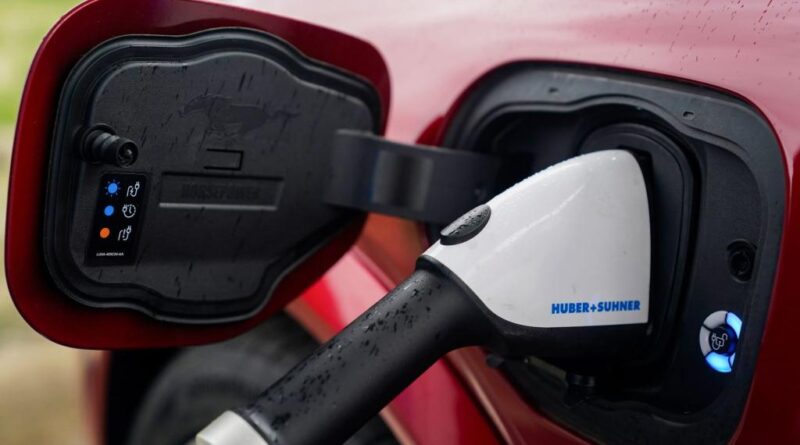End EV Subsidies — A Financial Burden on Taxpayers

Despite their sleek appearances, electric vehicles (EVs) may lead us to view them as advanced technologies. However, the features and benefits claimed by modern EVs are often already found in traditional gas-powered vehicles, typically at a lower price point.
For many consumers, EVs offer little advancement over existing options (unless you’re not planning to drive in cold climates or for extended periods).
The surge in visible EV advertisements on television—rising nearly 400% in recent years—might make it seem like Americans are eager to purchase them.
However, EV sales have only seen a marginal increase since last year, despite continuous positive media coverage, relentless advertising, and generous government subsidies.
Even after over a decade of federal support, EVs account for around 9% of all new car sales, with the majority going to affluent consumers and government fleets.
Electric vehicles have become status symbols among the wealthy.
It’s not surprising that Ford recently projected significant losses of $5.5 billion this year from its electric vehicle segment.
This means that Ford’s profits could soar by 50% if it ceased its EV production.
Last year, the company posted another loss of $5 billion, averaging $60,000 lost on each of the 20,962 EVs sold.
In 2023, Ford’s losses from EVs amounted to $4.7 billion, while it reported $2.2 billion in losses for 2022.
It’s clear there’s a pattern here.
What rational business continues to produce a product that incurs increasing losses per unit while hurting shareholder profits?
One that turns a blind eye to market realities and instead responds to misguided government incentives.
Ford understands that when the EV bubble inevitably bursts, taxpayers will likely bail them out. Why wouldn’t they?
The Biden administration pressured Ford into committing that 40% to 50% of its new vehicle sales by 2030 would be electric.
According to the Environmental Protection Agency’s emissions standards, car manufacturers must ensure that 32% of their new sales comprise EVs and hybrids by 2027. By 2032, a maximum of 29% of new sales can be gas-powered.
Good luck with that!
At present, every major automaker besides Tesla is operating at a loss on their electric vehicles.
Honda and General Motors have scrapped plans for new EV models due to a lack of demand; Toyota has cut global EV production by a third.
This is happening even as EVs benefit from a $7,500 federal tax credit and, in some cases, up to $12,500.
A few years ago, a report by the Texas Public Policy Foundation revealed that the average cost of an EV would jump by $48,698 without government incentives and subsidies.
Consider how few EVs would be sold if consumers had to pay out an extra $50,000 to acquire them.
Even EV stocks, which have considerably plummeted from previous highs, remain artificially buoyed by the understanding that the state will not permit the industry to collapse.
Moreover, it’s not solely about the vehicles themselves: Numerous government credits, grants, and loans linked to the EV initiative, such as those for battery factories and charging stations, make it challenging to keep track.
We continue to inflate this bubble with more money.
However, despite the constant government support, companies like Canoo (which lost $900 million while producing only 122 cars), Fisker (which has filed for bankruptcy twice and failed to repay a $139 million federal loan), and Lordstown Motors (which wasted hundreds of millions, including taxpayer money from Ohio, producing just 56 electric SUVs), have gone bankrupt.
Many of these companies do not pay taxpayers back.
Before leaving office, Biden granted Rivian a $6.6 billion low-interest “loan” so that it could complete the construction of a factory in Georgia it had promised (although calling it an EV maker is a stretch, as it struggles to meet production goals).
In reality, that Solyndra case pales in comparison.
The Department of Energy does not finance Solyndra or Rivian because they boast the finest talent, the best ideas, or the greatest likelihood of creating sustainable jobs.
They provide the funds because state planners favor solar and EV technologies to tackle a fabricated climate emergency.
If consumers genuinely want to buy electric vehicles, they should have the freedom to do so. I know individuals who adore them—the quiet operation, rapid acceleration, and their aesthetic appeal.
It stands to reason that a rewarding niche market for EVs could exist if the industry scaled down production significantly.
Let’s test that premise. Taxpayers should not be subsidizing anyone’s transportation.
David Harsanyi is a senior writer at the Washington Examiner.



